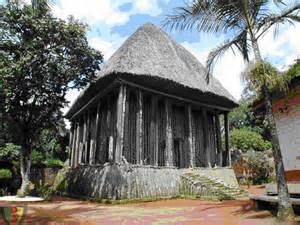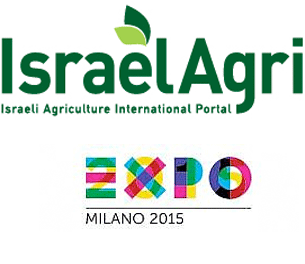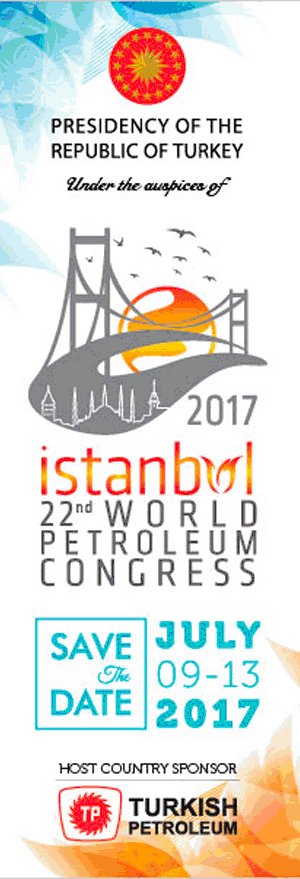Cameroon: Cameroon Art / Culture Profile
2012/02/27

Each of Cameroon's ethnic groups has its own incomparable cultural forms. Typical celebrations include births, deaths, plantings, harvests, and religious rituals. Seven national holidays are observed throughout the year, and movable holidays include the Christian holy days of Good Friday, Easter Sunday, Easter Monday, and Ascension; and the Muslim holy days of 'Id al-Fitr, 'Id al-Adha, and Eid Milad Nnabi.
Music and dance are an integral part of Cameroonian ceremonies, festivals, social gatherings, and storytelling. Traditional dances are highly choreographed and separate men and women or forbid participation by one sex all. The goals of dances range from pure entertainment to religious devotion.
Traditionally, music is transmitted orally. In a typical performance, a chorus of singers echoes a soloist. Musical accompaniment may be as simple as clapping hands and stomping feet, but traditional instruments include bells worn by dancers, clappers, drums and talking drums, flutes, horns, rattles, scrapers, stringed instruments, whistles, and xylophones; the exact combination varies with ethnic group and region. Some performers sing complete songs by themselves, accompanied by a harplike instrument.
Popular music styles include ambasse bey of the coast, assiko of the Bassa, mangambeu of the Bangangte, and tsamassi of the Bamileke. Nigerian music has influenced Anglophone Cameroonian performers, and Prince Nico Mbarga's highlife hit "Sweet Mother" is the top-selling African record in history. The two most popular styles are makossa and bikutsi. Makossa developed in Douala and mixes folk music, highlife, soul, and Congo music. Performers such as Manu Dibango, Francis Bebey, Moni Bilé, and Petit-Pays popularised the style worldwide in the 1970s and 1980s. Bikutsi originated as war music part the Ewondo. Artists such as Anne-Marie Nzié developed it into a popular dance music beginning in the 1940s, and performers such as Mama Ohandja and Les Têtes Brulées popularised it internationally during the 1960s, 1970s, and 1980s.
Cuisine varies by region, but a large, one-course, evening meal is common throughout the country. A typical dish is based on cocoyams, maize, manioc, millet, plantains, potatoes, rice, or yams, often pounded into dough-like fufu (cous-cous). This is served with a sauce, soup, or stew made from greens, groundnuts, palm oil, or other ingredients. Meat and fish are popular but expensive additions. Dishes are often completely hot, spiced with salt, red pepper, and Maggi. Water, palm wine, and millet beer are the traditional mealtime drinks, although beer, soda, and wine have gained popularity. Silverware is common, but food is traditionally manipulated with the right hand. Breakfast consists of leftovers or bread and fruit with coffee or tea. Snacks are popular, particularly in larger towns where they may be bought from street vendors.
Traditional arts and crafts are practiced throughout the country for commercial, decorative, and religious purposes. Woodcarvings and sculptures are particularly common.[106] The high-quality clay of the western highlands is suitable for pottery and ceramics.[95] Other crafts include basket weaving, beadworking, brass and bronze working, calabash carving and painting, embroidery, and leather working. Traditional housing styles make use of locally available materials and vary from temporary wood-and-leaf shelters of nomadic Mbororo to the rectangular mud-and-thatch homes of southern peoples. Dwellings made from materials such as cement and tin are increasingly common.
Cameroonian literature and film have concentrated on both European and African themes. Colonial-era writers such as Louis-Marie Pouka and Sankie Maimo were educated by European missionary societies and advocated assimilation into European culture as the means to bring Cameroon into the modern world. Next World War II, writers such as Mongo Beti and Ferdinand Oyono analysed and criticised colonialism and rejected assimilation. In a little while next independence, filmmakers such as Jean-Paul Ngassa and Thérèse Sita-Bella explored similar themes. In the 1960s, Mongo Beti and other writers explored post-colonialism, problems of African development, and the recovery of African identity. Meanwhile, in the mid-1970s, filmmakers such as Jean-Pierre Dikongué Pipa and Daniel Kamwa dealt with the conflicts between traditional and post-colonial society. Literature and films during the next two decades concentrated additional on all Cameroonian themes.
National policy strongly advocates sport in all forms. Traditional sports include canoe racing and wrestling, and several hundred runners participate in the 40 km (24.8 mi) Mount Cameroon Race of Hope each year. Cameroon is one of the few tropical nations to have competed in the Winter Olympics. However, sport in Cameroon is dominated by football (soccer). Amateur football clubs abound, organised along ethnic lines or under corporate sponsors. The Cameroon national football team has been one of the majority successful in the world since its strong showing in the 1990 FIFA World Cup. Cameroon has won four African Cup of Nations titles and the gold medal at the 2000 Olympics.
- Cameroon News
-
- BOTSWANA: South Africa plays an active role in the AU
- BOTSWANA: Africa: How to Adapt to Beat Crippling Droughts
- BOTSWANA: Africa: Expanded Engagement for Caterpillar - Boosting Sales & Alleviating Poverty
- BOTSWANA: WHO Africa Health Forum App Leads the Way
- BOTSWANA: Africa: 'Market Information Gap Threatens U.S.$400 Billion Intra-Africa Trade'
- BOTSWANA: Africa: Crafting an African Victory for the World
- Trending Articles
-
- ITALY: Italy's Current Account Surplus Increases In May
- EUROPEAN UNION: Draghi Urges Patience And Persistence On Inflation
- ARGENTINA: ARGENTINA: Country Reaches Deal To Export Lemons To Mexico
- EUROPEAN UNION: ECB Keeps Markets Guessing On Tapering
- EUROPEAN UNION: Eurozone Consumer Confidence Unexpectedly Falls In July
- SOUTH AFRICA: South Africa CB Unexpectedly Trims Interest Rate By 25 Bps






.gif?1356023993)





